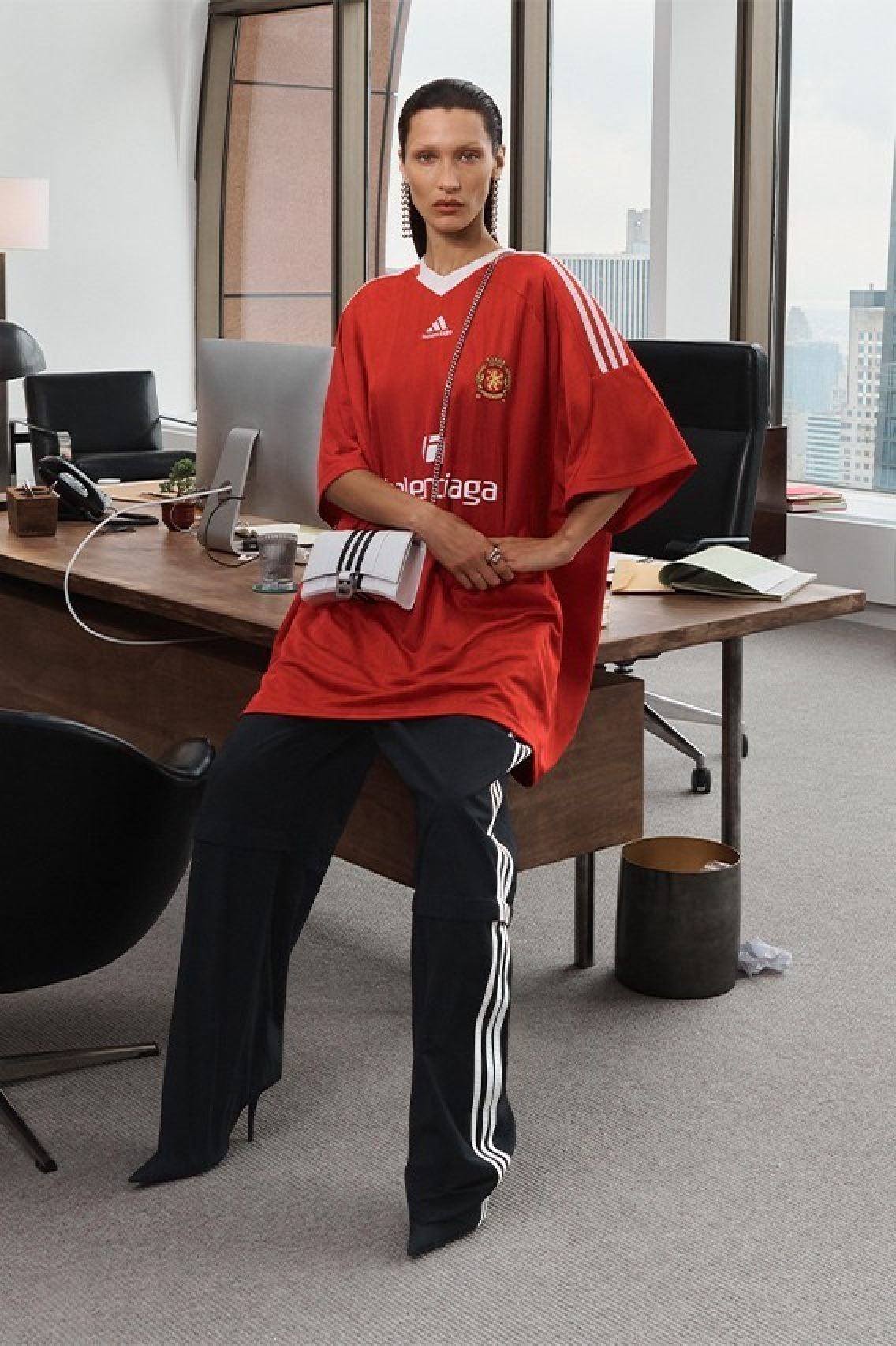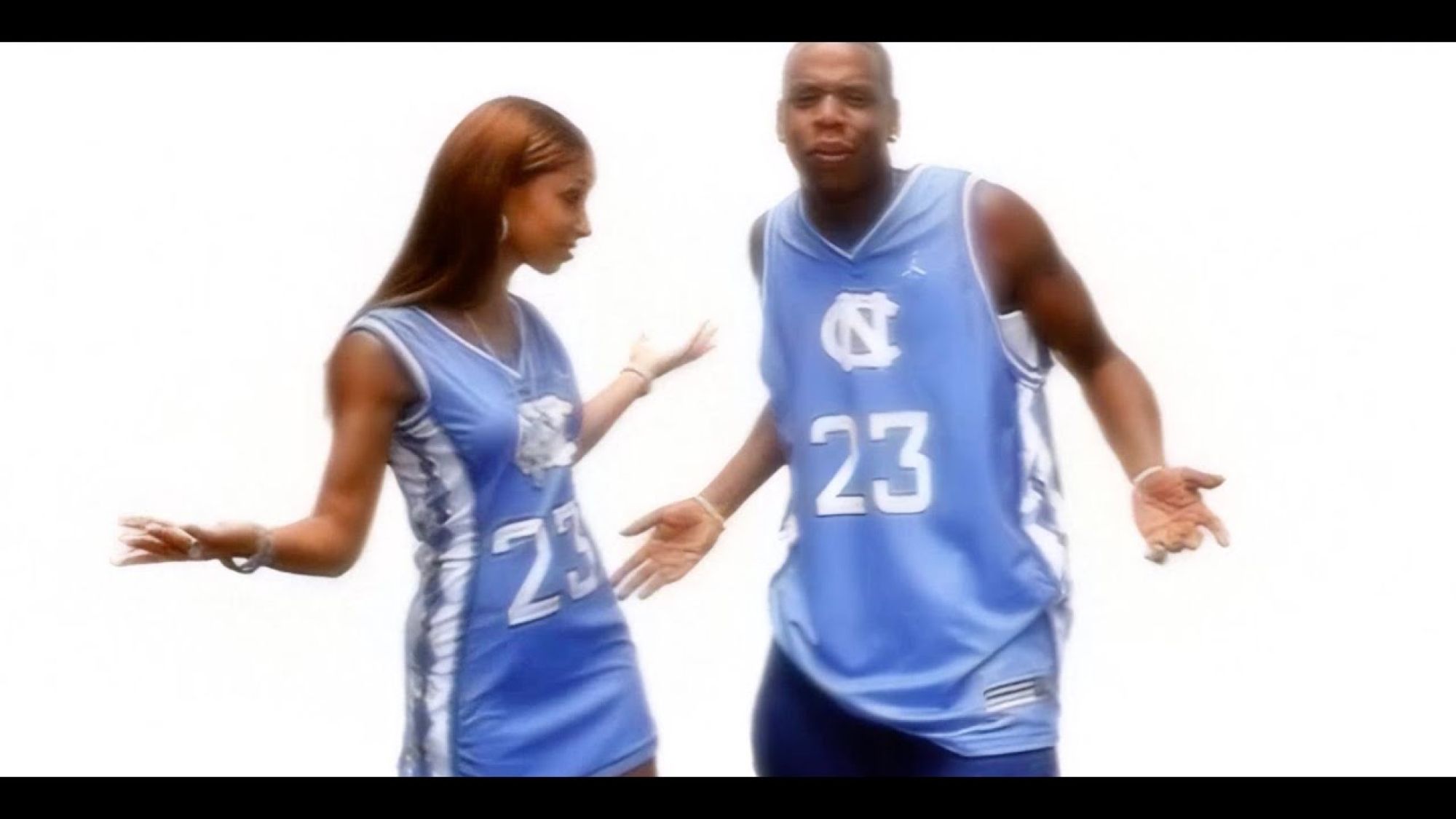“We are seeing more interest in athletics, as athletes have started to wear things solely for aesthetic reasons,” London-based fashion journalist Ayo Ojo says.
Louis Vuitton’s 2022 advertising campaign featuring football superstars Lionel Messi and Cristiano Ronaldo went viral when it was released just before the World Cup that year.
LVMH, the conglomerate behind the likes of Louis Vuitton, Dior and the French jeweller Chaumet, announced in July it will be a premium sponsor of the 2024 Olympic and Paralympic Games in Paris, with Chaumet also designing the winners’ medals.
The 1990s are back in fashion, and here’s why we should all be grateful
The 1990s are back in fashion, and here’s why we should all be grateful
Prada also in July signed a deal to become the official partner of China’s women’s football team.
“Luxury brands are starting to realise there’s a huge opportunity to work with sports teams that have all the eyeballs,” Ojo says.
“It’s been a long time coming,” says Naomi Accardi, a creative consultant and writer, “and I feel like what we are seeing right now is just the by-product of the world we live in: everything is an opportunity to advertise because watching sports and [access to] the lives of athletes [isn’t] limited to TV and tabloids.”

The trend isn’t entirely new. French football sensation David Ginola modelled Cerruti’s spring/summer 1996 collection, while football legends Pele, Diego Maradona and Zinedine Zidane all featured in a 2010 Louis Vuitton advertising campaign.
And it has not been without some bumps in the road. Take Burberry’s nova check print caps, which became associated with football hooliganism after being adopted en masse by the British working class and nouveau riche in the early 2000s. The brand promptly discontinued the product in an attempt to maintain its reputation as a high-end house.

For luxury brands, it helps that aligning with sports and other key figures has never been so in vogue – even among shoppers who wouldn’t consider themselves sports fans.
Social media influencers are also playing a big part, for example when Italian model and blogger Chiara Ferragni recently paired a Borussia Dortmund football shirt with a Prisma bag from Italian luxury brand Ferragamo. From East London to Paris’ Le Marais, variations of this look have become the norm.
“Brands create desirability, which in turn brings value to the brand,” an LVMH source says. “Given the prominence of social media, such products also have a strong identification factor … making the product worn by athletes and sports stars relatable.”
Appealing to social media users in general is a useful tactic, because the average sports fan is typically not too preoccupied with dressing to impress.
“The average fan does not care about glam and glitz … they care about winning … and that the teams spend enough on good players and have a plan to stay up top [of the league table],” Accardi says.

Credit for bridging the gap between sports and fashion must also be given to hip-hop culture, which brought then-nascent streetwear and sportswear to the forefront of Y2K consumer culture when American rappers started donning basketball jerseys in their music videos in the 1990s.
The trend continued into the 2000s with hip-hop videos for tracks such as “Oh Boy” by Cam’ron featuring Juelz Santana, and “Best of Me, Part II” by Mya featuring Jay-Z, in which artists donned the jerseys of NBA and college basketball teams.
“The NBA actually led the way as the sport [that] positioned its athletes as style icons and marketed them individually off the court,” Accardi says. “They did the brand partnerships [with] the most famous sneakers in the world, the [Nike] Jordan 1s, and people have been wearing basketball jerseys as a fashion statement for years.”

Another factor is the rise of sports’ teams appointing a creative director to give an edge to their team merchandise, which typically can be relatively formulaic.
Take artist Daniel Arsham, who was appointed creative director at the NBA’s Cleveland Cavaliers; Ronnie Fieg, owner of streetwear brand Kith, who joined the NBA’s New York Knicks; and Kenny Annan-Jonathan, founder of the sports marketing agency The Mailroom, who has teamed up with London-based football club Crystal Palace.
For sports teams, the position of creative director is a relatively novel one – but is such a position needed? Accardi thinks not.
“The NBA was a [great] example: both Ronnie Fieg and Daniel Arsham did virtually nothing, or at least nothing relevant, because it really didn’t resonate much,” she says.
The Japanese market is a tough nut to crack: how did Ikea, H&M, Zara do it?
The Japanese market is a tough nut to crack: how did Ikea, H&M, Zara do it?
But clubs are feeling the heat as ratings slump and younger generations pay less attention to sports, so appointing fashionable names as creative directors can be seen as “looking for alternative ways to sell merch”, Accardi says.
Others see more potential in the role. “Sports teams didn’t need a creative director at first, but they definitely do now because of the customer base that is now buying their apparel,” Ojo says.
“If anything, I think we are going to start seeing an increasing number of teams hire creative directors as the demand for their apparel increases.”
There is consensus on one thing: the changing role that merchandising is playing in framing how fans see their favourite sports teams and athletes.
Products are not only able to strengthen fans’ personal connections with the sport but also project a team’s identity to a greater audience, with Kith’s recent collaboration with Mitchell & Ness for American football team the New York Giants a case in point.
The gap between fashion and sports is narrowing by the day, and the addition of creative directors is primed to push this conversation further.







